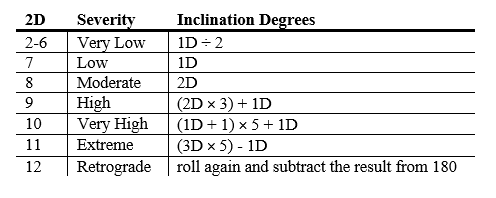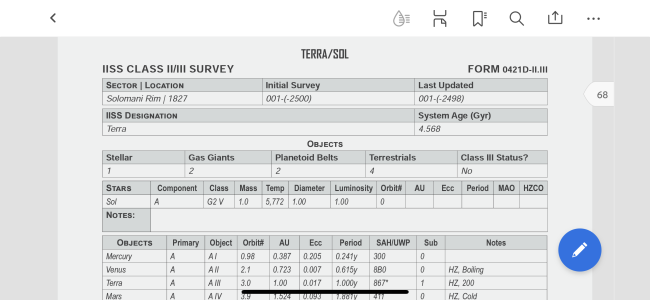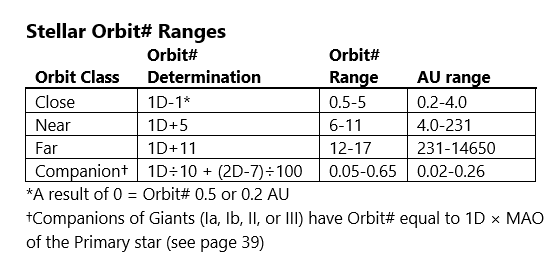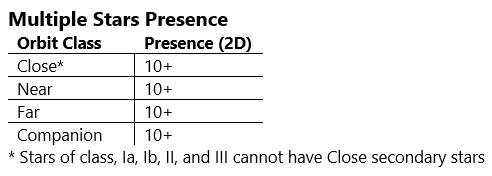In the results column of the surface feature distribution table on the bottom of page 100, if a result says "x% of surface coverage is in major bodies," does that mean x% of the total surface of the planet, or x% of the proportion of the planet's surface that's covered in "bodies" (of land or water, whichever is lesser)? If it's the latter, how is that different from the "body coverage" mentioned in the other results? And if it's the former, it can result in impossible situations, but I think you must have meant the latter.
Since tidal impacts (p. 105) affect the length of the sideral day, and the sidereal day is an input for the length of a solar day (p. 104), it would be nice if you could mention the potential effect of page 105 somewhere between basic rotation rate generation on 103 and solar day calculation on page 104, just in case some poor soul gets all the way through calculating the length of a solar day and then finds out his sidereal day is longer than he thought it was and has to start again.

Part of the text for the runaway greenhouse effect optional rule on pages 79-80 reads,
Finally, this runaway greenhouse check can also be
performed after detailed temperature determination for
any world where the mean temperature exceeds 303K
(30°C).
The language in the rest of the section states that a runaway greenhouse effect check applies to any world in the habitable zone with an atmosphere of 2+ meeting temperature-based criteria. The corresponding section in the rules for advanced temperature determination, on page 111, reads,
If using the optional runaway greenhouse check
procedure on page 79, the Referee should check for this
effect on any world with an initial Atmosphere of 2–9, D
or E with a mean temperature above 303K (30°C).
That is, the wording on page 111 says the runaway check
doesn't apply to atmospheres A, B, and C, and it isn't explicitly limited to only worlds in the habitable zone; but the version on page 79-80 says it's only for worlds on in the habitable zone and seems to include atmospheres A, B, and C, and since the text on 111 refers to the text on page 79 I can't assume these are meant to be two separate, incompatible rules options.
I think the idea is that (1) if and only if the referee uses the detailed temperature determination rules instead of fudging it with the tables on pages 47 and 109, the text about atmosphere codes on page 111 overrides the normal rules for the runaway greenhouse check where they conflict, and (2) worlds outside of the habitable zone always ignore the runaway greenhouse check and just take the result they get from their own atmosphere tables (worlds farther from the primary should never get enough light and worlds closer to the primary are already likely to be hot and exotic/corrosive/insidious anyway, which is main consequence of failing the check). But it took me a while to reach this conclusion.
While we're on the subject of the runaway greenhouse check, the text on the bottom of page 79 says "the Referee can examine any world within the habitable zone that has an Atmosphere code of 2+ and is boiling (adjusted temperature roll of 12+) or hot (10 or 11) as a result of basic generation – this can result from a combination of the real roll or
Orbit# – simulated raw roll for temperature and the DMs applied for Atmosphere code as shown on page 78." I don't see any examples involving Orbit # or DMs for temperature on page 78. Did you possibly mean page 47?
Don't mean to pile on, loving the book so far.




